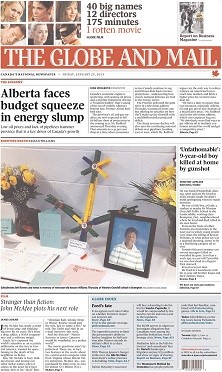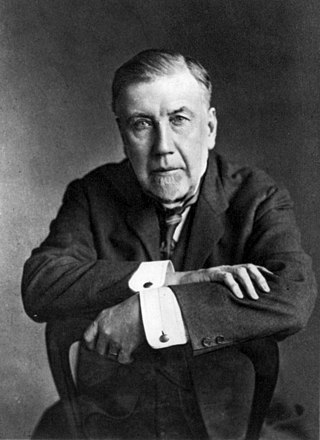History
The Toronto Evening Telegram was founded in 1876 by publisher John Ross Robertson. He had borrowed $10,000 to buy the assets of The Liberal, a defunct newspaper, [2] and published his first edition of 3,800 copies on April 18, 1876. [1] The editor of Telegram from 1876 to 1888 was Alexander Fraser Pirie (1849–1903), a native of Guelph. Pirie had worked for the Guelph Herald, his father's paper.
The newspaper became the voice of working-class, conservative Protestant Orange Toronto. In 1881, Robertson erected a building for the paper at the southeast corner of King and Bay Streets, on Melinda Street. [3] John R. (Black Jack) Robinson succeeded Pirie as editor-in-chief in 1888 and held that position until he died in 1928. [4]
The Telegram focused on local issues [1] and became the largest circulation daily in Toronto, but it lost that position in 1932 to the Toronto Daily Star and never regained it. [2] During the early 20th century, The Tely, as it was popularly known was one of the first Canadian newspapers to introduce Saturday (and in 1957 Sunday) colour comics section (which by its later years spanned two sections), and a radio (and after 1952 television) magazine with listings for the entire week. Following the death of Robertson's widow in 1947, the paper was bought by George McCullagh, the publisher of The Globe and Mail , for $3.6 million. [2] Evening was dropped from the paper's name in 1949.
McCullagh died in 1952, and the paper was then purchased by John Bassett for $4.25 million [2] with money borrowed from the Eaton family. [1] In March 1957, the paper introduced a Sunday edition, the first Toronto paper to do so, and was threatened by the Attorney-General of Ontario with charges under the province's Lord's Day Act. [5] The Sunday edition was unsuccessful and ceased publication after four months. [1]
In December 1959, Bassett bought a 3.6-acre (15,000 m2) property on Front Street West and in 1963 moved the Telegram to a new building at that location from the site at Bay and Melinda Street where the paper had been produced since 1899. At the same time, Telegram Corporation acquired a majority interest in Toronto TV station CFTO-TV.
In July 1964, the International Typographical Union called a strike at the Telegram, the Star, and The Globe and Mail. All three papers continued to publish despite the strike.
The Telegram lost $635,000 in 1969 and $921,000 in 1970 and was on pace to lose another $900,000 in 1971 when it was shut down that year by Bassett on October 30, [6] just as a strike was looming. [7] Many employees moved to the Toronto Sun , which launched the Monday after the Telegram ceased publication. The Telegram subscriber list was sold to the Toronto Star for $10 million. The Star also leased the Telegram's Front Street facility, until it was sold to The Globe and Mail .
In the book The Death of the Toronto Telegram (1971), the former Telegram writer Jock Carroll described the decline of the paper and provided many anecdotes about the Canadian newspaper business from the 1950s to 1970.
York University's library holds about 500,000 prints and 830,000 negatives of pictures taken by the Telegram's photographers. Over 13,000 images are currently searchable on line, with more appearing on a regular basis.








